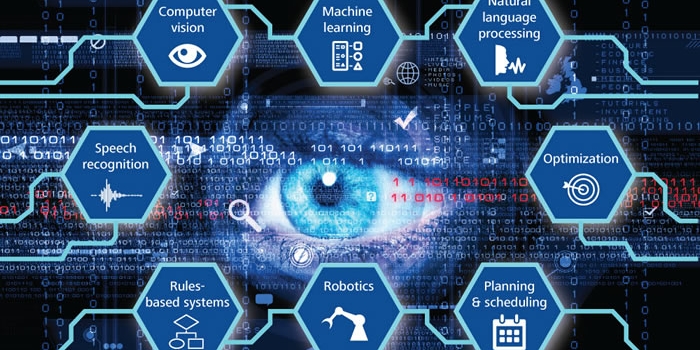
The market for artificial intelligence (AI) technologies is flourishing. Beyond the hype and the heightened media attention, the numerous startups and the internet giants racing to acquire them, there is a significant increase in investment and adoption by enterprises. AI market will grow from $8 billion in 2016 to more than $47 billion in 2020.
Coined in 1955 to describe a new computer science sub-discipline, “Artificial Intelligence” today includes a variety of technologies and tools, some time-tested, others relatively new. To help make sense of what’s hot and what’s not, Forrester just published a TechRadar report on Artificial Intelligence (for application development professionals), a detailed analysis of 13 technologies enterprises should consider adopting to support human decision-making.
Based on Forrester’s analysis, here’s my list of the 10 hottest AI technologies:
- Natural Language Generation: Producing text from computer data. Currently used in customer service, report generation, and summarizing business intelligence insights.
- Speech Recognition: Transcribe and transform human speech into format useful for computer applications. Currently used in interactive voice response systems and mobile applications.
- Virtual Agents: “The current darling of the media,” says Forrester (I believe they refer to my evolving relationships with Alexa), from simple chatbots to advanced systems that can network with humans. Currently used in customer service and support and as a smart home manager.
- Machine Learning Platforms: Providing algorithms, APIs, development and training toolkits, data, as well as computing power to design, train, and deploy models into applications, processes, and other machines.
- AI-optimized Hardware: Graphics processing units (GPU) and appliances specifically designed and architected to efficiently run AI-oriented computational jobs.
- Decision Management: Engines that insert rules and logic into AI systems and used for initial setup/training and ongoing maintenance and tuning. A mature technology, it is used in a wide variety of enterprise applications, assisting in or performing automated decision-making.
- Deep Learning Platforms: A special type of machine learning consisting of artificial neural networks with multiple abstraction layers. Currently primarily used in pattern recognition and classification applications supported by very large data sets.
- Biometrics: Enable more natural interactions between humans and machines, including but not limited to image and touch recognition, speech, and body language. Currently used primarily in market research.
- Robotic Process Automation: Using scripts and other methods to automate human action to support efficient business processes. Currently used where it’s too expensive or inefficient for humans to execute a task or a process.
- Text Analytics and NLP: Natural language processing (NLP) uses and supports text analytics by facilitating the understanding of sentence structure and meaning, sentiment, and intent through statistical and machine learning methods. Currently used in fraud detection and security, a wide range of automated assistants, and applications for mining unstructured data.
Related Articles
Accelerated Mobile Pages is a hot website development trend in 2022. It is a project born out of the collaboration between Google and Twitter to create faster mobile pages. AMP...
What is Artificial Intelligence? According to the father of Artificial Intelligence, John McCarthy, it is “The science and engineering of making intelligent machines, especially intelligent computer programs”. Artificial Intelligence is...
Debugging is a process of removing bugs from the script to ascertain correct execution. Debugging is always a time consuming task, as during dry run you have to go at...
